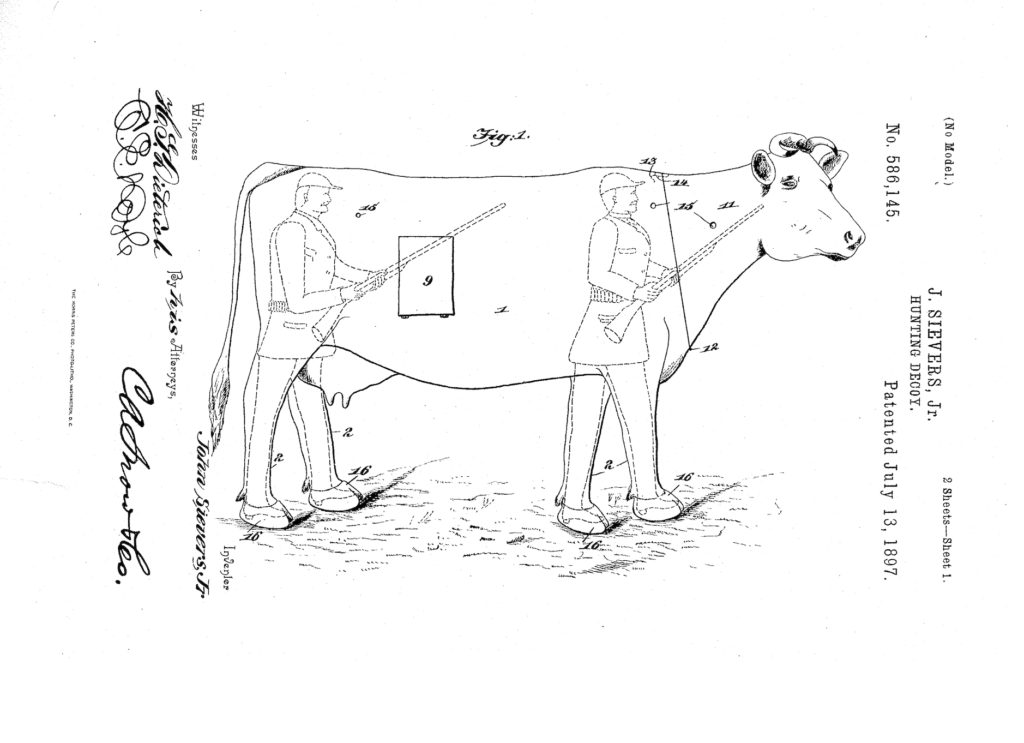Nowadays, we mostly think of working waterfowl decoys as mass-produced, inexpensive hollow shells of plastic that closely resemble the ducks and geese they are intended to fool. But such was not always the case. Delving into decoy history, we find those who enjoyed waterfowl hunting often created and used some very different types of dekes that sometimes soared in value as the years passed.
Heavy-Duty Decoys
No one would make duck decoys out of cast iron, right? Wrong. The idea seems preposterous, yet hunters of the past often used them. These flat-bottomed birds — each weighing as much as 30 pounds — were set on the wings of sink boxes to provide stability and to keep the boxes flush with the water’s surface.
Live Decoys
Live ducks and geese called "tollers" also were used at one time to toll, or lure, their wild counterparts into shooting range. Their use became illegal in 1935, but prior to that, many hunters maintained large pens of tolling fowl that were sold throughout the country. The birds were trained to call and to tolerate a leash. A strip of leather was sewn about the leg in a figure eight fashion to facilitate handling. The ones that were slow to cooperate soon found their way into the soup pot.
Related: How to find ducks (scouting tips)
Sievers’ Folly
In 1897, Nebraskan John Sievers Jr. was issued a patent for a hunting decoy much like a full-sized cow. The patent specifications indicated that the decoy was to be manufactured using a flexible shell of hide, canvas or similar material and be painted like a cow. A system of braces held the hollow body upright and was supported by two hunters inside the cow, one fore and one aft. The decoy’s legs held the legs of the men.

Photo credit: Google Patents
The idea was to walk the decoy near waterfowl. Then at the right time, the hinged neck portion dropped down to enable the forward man to “discharge his fowling piece.” The rear man shot from a side window. The specifications did not mention precautions to be taken by hunters in the presence of a bull.
Most Expensive Decoys
Don't throw out your grandfather’s old decoys. They could be worth millions.
On January 23, 2000, bidders flocked to Sotheby’s in New York City to compete at the auction of the finest private collection of American waterfowl decoys in the world. In a standing-room-only salesroom, hundreds of passionate collectors witnessed the sale of the distinguished collection of Dr. James M. McCleery, which became the world’s highest-grossing auction of decoys with a staggering total of $10,965,935. The two-day event set a world record for the most expensive decoy ever sold at auction when a sleeping Canada goose by renowned carver Elmer Crowell of East Harwich, Massachusetts, c. 1917, went for a staggering $684,500. Other highlights of the auction included a long-billed curlew by William Bowman that sold for $464,500, a wood duck drake by the Mason Decoy Factory that which fetched $354,500, and a ruddy turnstone by Lothrop Holmes of Kingston, Massachusetts, that sold for the stunning price of $470,000.
Related: How to hunt diving ducks
In January 2007, the record price for a single decoy was broken when a red-breasted merganser hen decoy by Lothrop Holmes sold for $856,000 at a Guyette & Schmidt/Christie’s auction in New York
The first million-dollar prices were achieved the same month when two decoys — a sleeping Canada goose and preening pintail drake by Elmer Crowell — sold for $1.13 million dollars each in a private sale.
Photo by John Hafner Photography






